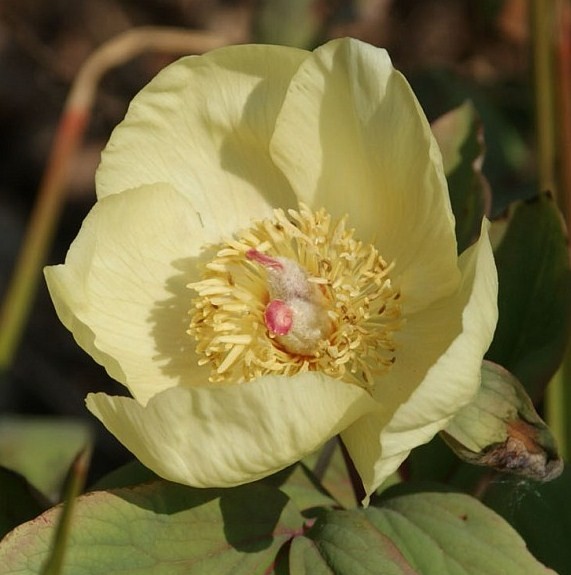Wittmann's peony
(Paeonia macrophylla)

Description
Paeonia daurica subsp. wittmanniana, also known as Wittmann's peony, is a perennial peony native to the southern Transcaucasian region. It was formerly regarded as a separate species, Paeonia wittmanniana, but in 2002, the Chinese botanist Hong Deyuan reduced it to a subspecies of Paeonia daurica. It is closely related to another subspecies of P. daurica, P. daurica subsp. mlokosewitschii. Paeonia daurica subsp. wittmanniana is up to 1.5 m tall. Above the plant is glabrous and dark green; below it is lighter green, glaucescent, with white hairs especially crowded along the veins, and the lower leaves are biternate. Yellow to white flowers, 10–13 cm across, appear from April to June. The filaments are red and up to 1 cm long and the anthers are yellow to orange. The stamens are around 22 mm long. The divided leaf segments are ovate, cuneate, and often are oblique and abruptly cut off at the base. The peony or paeony is a flowering plant in the genus Paeonia, the only genus in the family Paeoniaceae. Peonies are native to Asia, Europe and Western North America. Scientists differ on the number of species that can be distinguished, ranging from 25 to 40, although the current consensus is 33 known species.The relationships between the species need to be further clarified. Most are herbaceous perennial plants 0.25–1 metre (1–3 ft) tall, but some are woody shrubs 0.25–3.5 metres (1–11 ft) tall. They have compound, deeply lobed leaves and large, often fragrant flowers, in colors ranging from purple and pink to red, white or yellow, in late spring and early summer. The flowers have a short blooming season, usually only 7–10 days. All Paeoniaceae are herbaceous perennials or deciduous shrubs, with thick storage roots and thin roots for gathering water and minerals. Some species are caespitose (tufted), because the crown produces adventitious buds, while others have stolons. They have rather large compound leaves without glands and stipules, and with anomocytic stomata. In the woody species the new growth emerges from scaly buds on the previous flush or from the crown of the rootstock. The large bisexual flowers are mostly single at the end of the stem. In P. emodi, P. lactiflora, P. veitchii and many of the cultivars these contributed to, few additional flowers develop in the axils of the leaves. Flowers close at night or when the sky is overcast.
Taxonomic tree:







